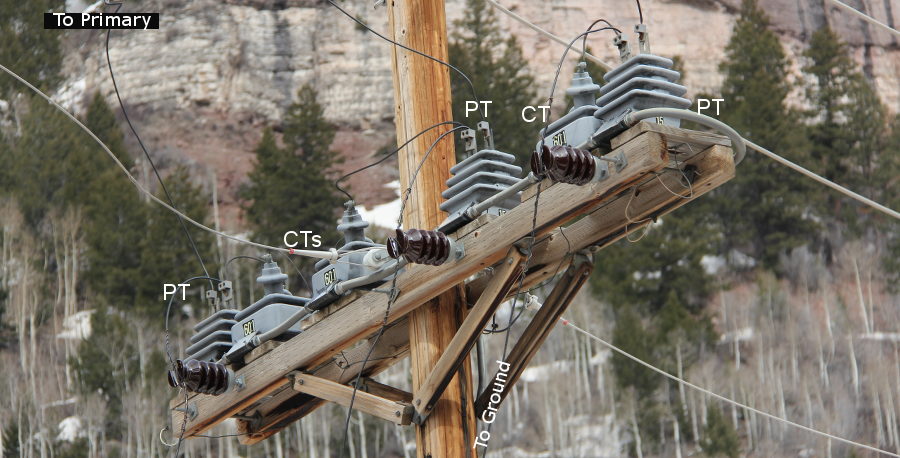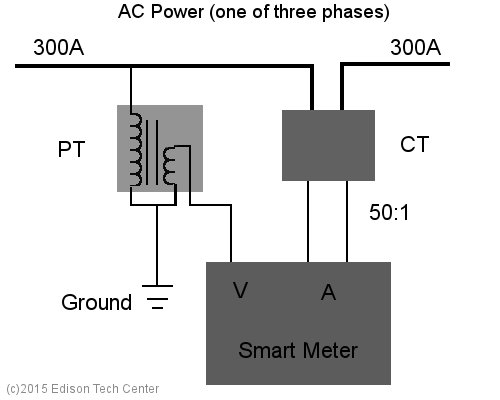When we talk about measuring current we immediately run into the problem of how to measure higher currents found in AC power transmission. Engineers discovered they can use transformers not just for converting voltages for transmission, but to grab a sample of the line for use with meters that would otherwise burn up under the full load.

Instrument Transformers
“Instrument transformers” create a low voltage version of the primary’s signal, allowing meters to read the voltage and other aspects of the primary line. There are two kinds of instrument transformers, the current transformer for ammeters and the potential transformer for volt meters.
 The Current Transformer (CT)
The Current Transformer (CT)
The “CT” as it’s commonly referred to is used on AC service lines to read the amperage. Most CTs produce a standard output of 1 or 5 amps. The most basic of CTs works like an air core transformer (ring shape) placed around a HV AC line. In hand-held multimeters we’d call this a “clamp meter”, however for HV we need something more robust and safe. As the primary AC line varies, the CT will change with it. We need to use a multiplier to calculate the primary’s current as it will be a specific proportion to it. See our video below where we interviewed an expert from San Luis Power Company about how they use CTs:
The Potential Transformer (PT)
There are many kinds of PTs designed for all sorts of high voltages. Here is a full reference on PTs by GE Grid Solutions.

Sources are found on our credits page.
